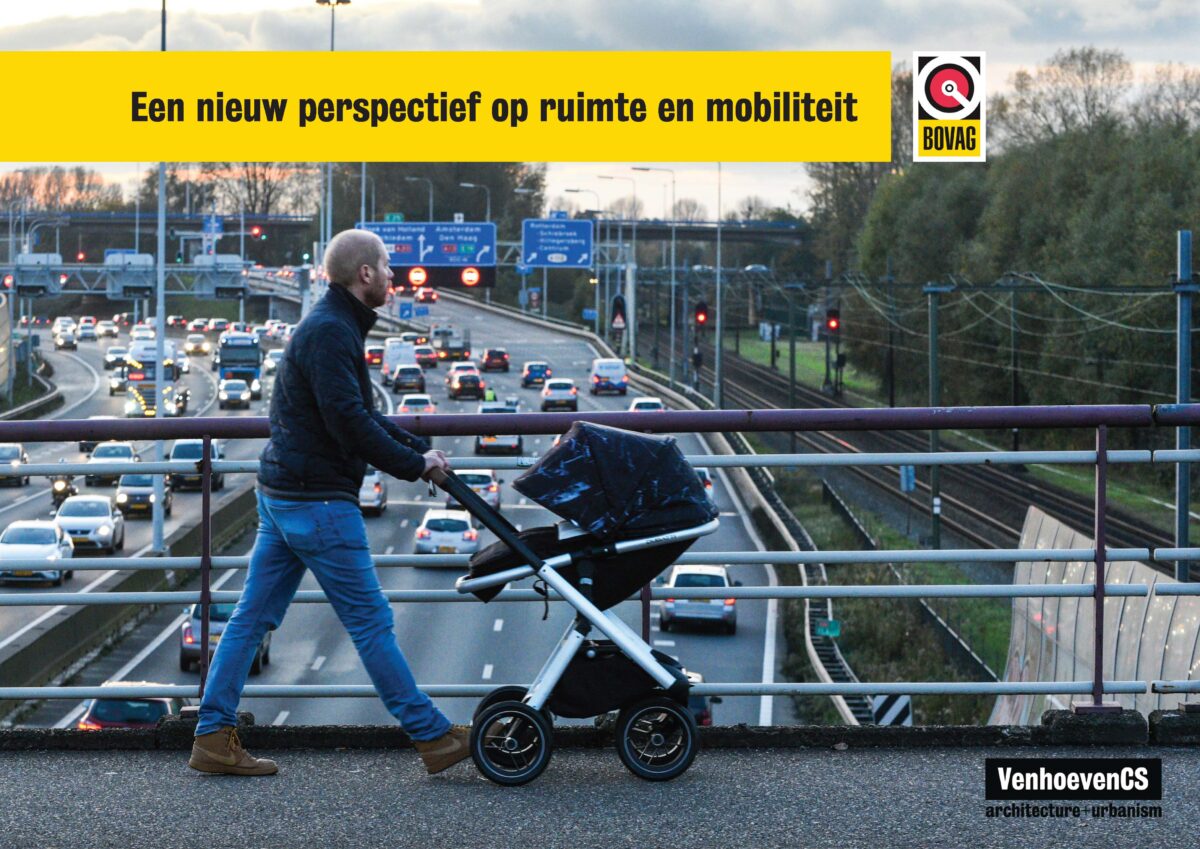A new perspective on space and mobility
(NL), 2025
Information
The study A New Perspective on Space and Mobility, carried out by VenhoevenCS on behalf of BOVAG, shows that the mobility sector is not only affected by the major spatial transitions, but can in fact play a key role in solving them. By joining forces, governments and entrepreneurs can develop mobility and spatial planning in an integrated way – creating opportunities for future-proof policies as well as new business models.
A city’s worth of space
Together, the more than 8,000 mobility businesses in the Netherlands – from bike shops to car dealerships – manage over 26 km² of land and buildings. This is comparable in size to medium-sized cities such as Heerenveen or Waalwijk. Spread across the country, these locations represent a spatial reserve deeply embedded in villages, towns and landscapes.
Major challenges, limited space
What if this spatial reserve were used more intelligently and for multiple purposes? Extra space is urgently needed. The demand for land is now three times greater than the available supply, driven by the enormous challenges facing the Netherlands: climate adaptation, the energy transition, the shift to a circular economy, and the construction of hundreds of thousands of homes. To help steer these transitions, the ministries of Housing and Spatial Planning, Infrastructure and Water Management, and Economic Affairs and Climate are working on a comprehensive policy framework. With the forthcoming National Spatial Strategy, the Mobility Vision, and the Spatial Economic Vision, they are setting the course for how this puzzle can be solved.
Entrepreneurs and government: building a future together
The study by VenhoevenCS demonstrates that mobility companies are not just part of the challenge – in close collaboration with government, they can also be part of the solution. Their locations are strategically positioned: in the heart of neighbourhoods, on the edges of cities, on business parks and in rural areas. This makes them ideally placed to contribute to the transitions ahead.
On the one hand, by using their sites for multiple functions – combining mobility with housing, energy generation, logistics and social facilities. On the other hand, by innovating in mobility solutions: businesses have in-depth knowledge of consumer behaviour and practical experience with new services, enabling them to contribute to hubs, shared mobility, and multimodal transfer points that make our mobility system sustainable and inclusive.
But this contribution can only thrive if governments create the right conditions: by allowing space in zoning plans, by offering vision and direction, and by aligning national and regional networks with urban mobility. This creates a reciprocal relationship in which entrepreneurs innovate and invest, while governments ensure the framework to scale these solutions.
The right mobility in the right place
The study shows that future-proof accessibility can only be achieved if national and regional mobility networks are well connected to urban systems. In rural areas, the car will continue to play an important role, while in and around cities the bicycle and public transport become more dominant. As density increases, transfer points become crucial.
This is where mobility companies can make a difference: their locations are often found in exactly these strategic places – in villages, on city edges, and on business parks. In partnership with governments, entrepreneurs can develop their sites into regional hubs, city hubs and neighbourhood hubs, bringing together shared mobility and facilities. The result is a network where transfers happen naturally and mobility becomes an effortless part of daily life.
Future visions for joint transformation
The report outlines what collaboration can look like in practice. In villages, a local car dealer could become a community meeting place and shared mobility hub, with both social and commercial facilities. On business parks, the sea of asphalt could be transformed into a multifunctional cluster for logistics, energy and mobility – or densified with mixed-use developments combining living, working and amenities. In mixed urban areas, the mobility hub could serve as a vital connector in everyday life and a driver of sustainable and inclusive neighbourhoods. And on the metropolitan edge, the hub of the future could emerge: a transfer point and urban hotspot in one.
From vision to action
The next step is to turn opportunities into action. The report shows how this can be done: by working together on a shared vision and translating it into strategies tailored to each region and neighbourhood.
Statistics
| Name: | A new perspective on space and mobility |
| Assignment: | Design reseach |
| Period: | 2023-2025 |
| Status: | Completed |
| Client: | BOVAG |
Credits
| VenhoevenCS: | Ton Venhoeven, Hermen Jansen |

